Today I'm screening for the safest dividend stocks” within the consumer goods sector.
Consumer goods stocks are one of my favorite sectors because of their strong relationship to the end-consumer. As a result, sales and earnings are less volatile than in other sectors. In addition, most of them are great long-term dividend plays. From among 390 stocks in the sector, 193 pay dividends.
Below is a list of the best yielding large cap consumer dividend stocks with a volatility lower than the overall market.
It’s not surprising that the big tobacco companies are among the top results. You can hate them or not but they are still some of the safest dividend stocks available. Below are the top 20 results, three are High-Yields and eleven are recommended to buy.
Companhia de Bebidas das Americas - AMBEV (ABV) has a market capitalization of $122.39 billion. The company employs 46,503 people, generates revenue of $13.561 billion and has a net income of $4.359 billion. The firm’s earnings before interest, taxes, depreciation and amortization (EBITDA) amounts to $6.556 billion. The EBITDA margin is 48.34 percent (the operating margin is 43.17 percent and the net profit margin 32.14 percent).
Financial Analysis: The total debt represents 8.92 percent of the company’s assets and the total debt in relation to the equity amounts to 16.07 percent. Due to the financial situation, a return on equity of 34.58 percent was realized. Twelve trailing months earnings per share reached a value of $1.59. Last fiscal year, the company paid $0.92 in the form of dividends to shareholders.
Market Valuation: Here are the price ratios of the company: The P/E ratio is 24.62, the P/S ratio is 8.85 and the P/B ratio is finally 9.53. The dividend yield amounts to 4.63 percent and the beta ratio has a value of 0.98. 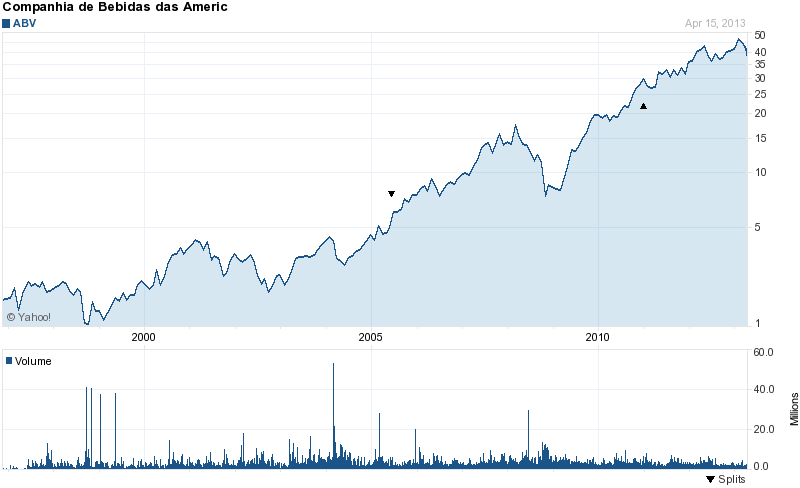
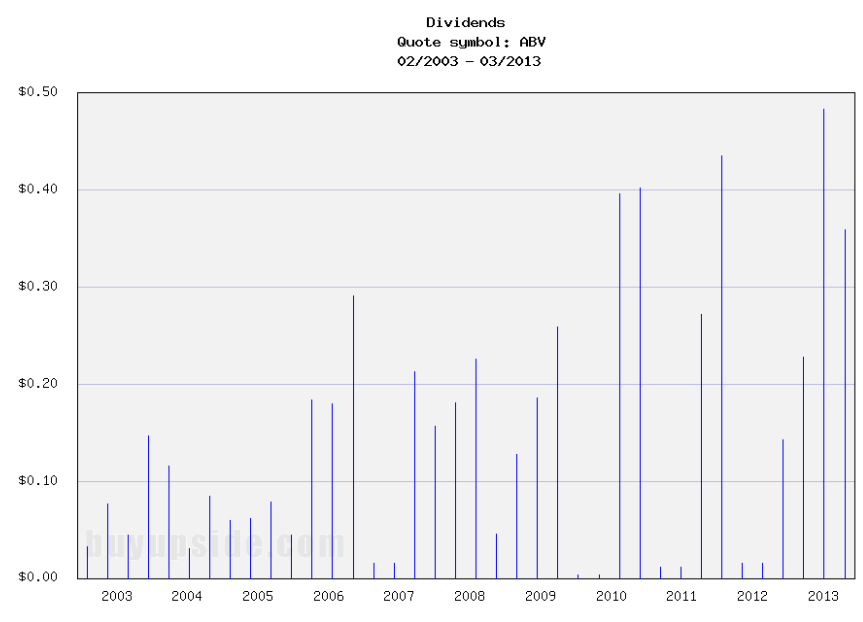
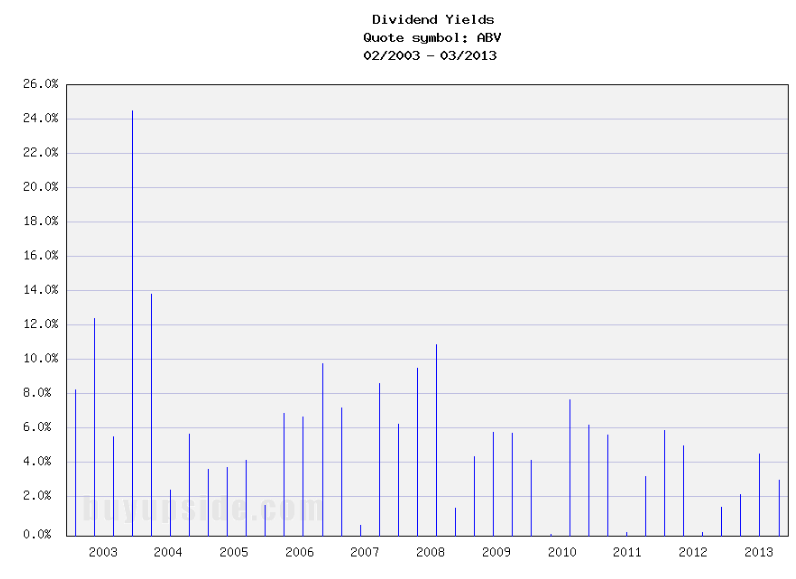
Mattel (MAT) has a market capitalization of $14.82 billion. The company employs 28,000 people, generates revenue of $6.420 billion and has a net income of $776.46 million. The firm’s earnings before interest, taxes, depreciation and amortization (EBITDA) amounts to $1,195.30 million. The EBITDA margin is 18.62 percent (the operating margin is 15.90 percent and the net profit margin 12.09 percent).
Financial Analysis: The total debt represents 23.13 percent of the company’s assets and the total debt in relation to the equity amounts to 49.23 percent. Due to the financial situation, a return on equity of 27.08 percent was realized. Twelve trailing months earnings per share reached a value of $2.21. Last fiscal year, the company paid $1.24 in the form of dividends to shareholders.
Market Valuation: Here are the price ratios of the company: The P/E ratio is 19.47, the P/S ratio is 2.31 and the P/B ratio is finally 4.80. The dividend yield amounts to 3.35 percent and the beta ratio has a value of 0.98. 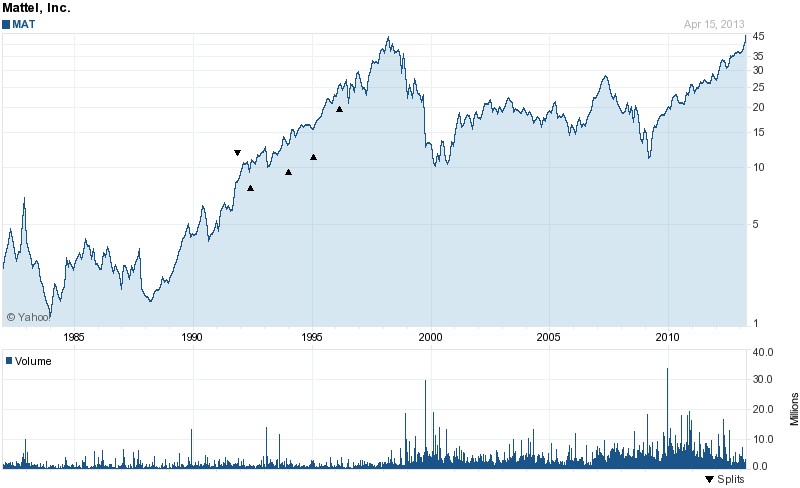
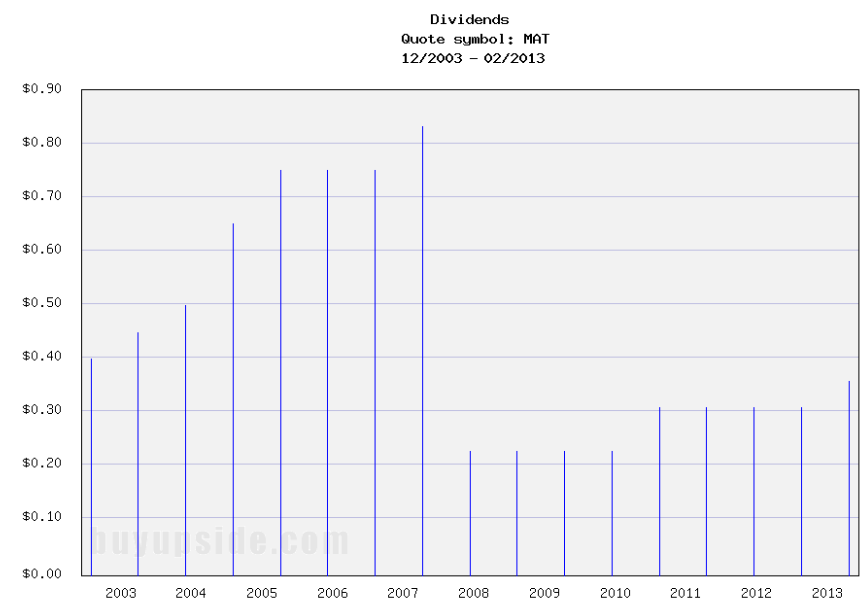
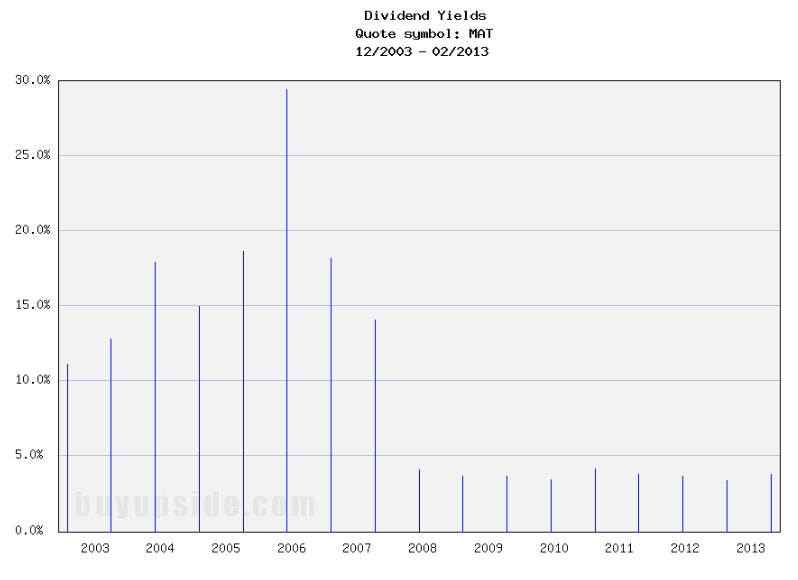
Procter & Gamble (PG) has a market capitalization of $217.58 billion. The company employs 126,000 people, generates revenue of $83.680 billion and has a net income of $9.317 billion. The firm’s earnings before interest, taxes, depreciation and amortization (EBITDA) amounts to $16.496 billion. The EBITDA margin is 19.71 percent (the operating margin is 15.88 percent and the net profit margin 11.13 percent).
Financial Analysis: The total debt represents 22.52 percent of the company’s assets and the total debt in relation to the equity amounts to 46.94 percent. Due to the financial situation, a return on equity of 13.86 percent was realized. Twelve trailing months earnings per share reached a value of $3.90. Last fiscal year, the company paid $2.14 in the form of dividends to shareholders.
Market Valuation: Here are the price ratios of the company: The P/E ratio is 20.42, the P/S ratio is 2.60 and the P/B ratio is finally 3.52. The dividend yield amounts to 3.02 percent and the beta ratio has a value of 0.47. 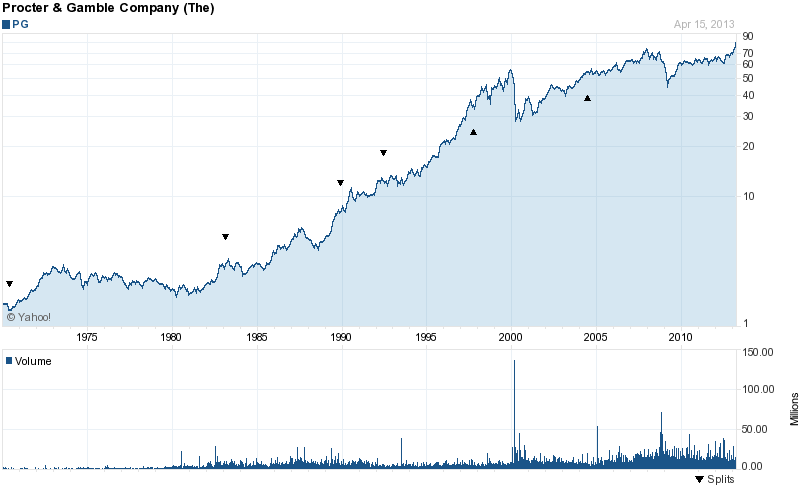
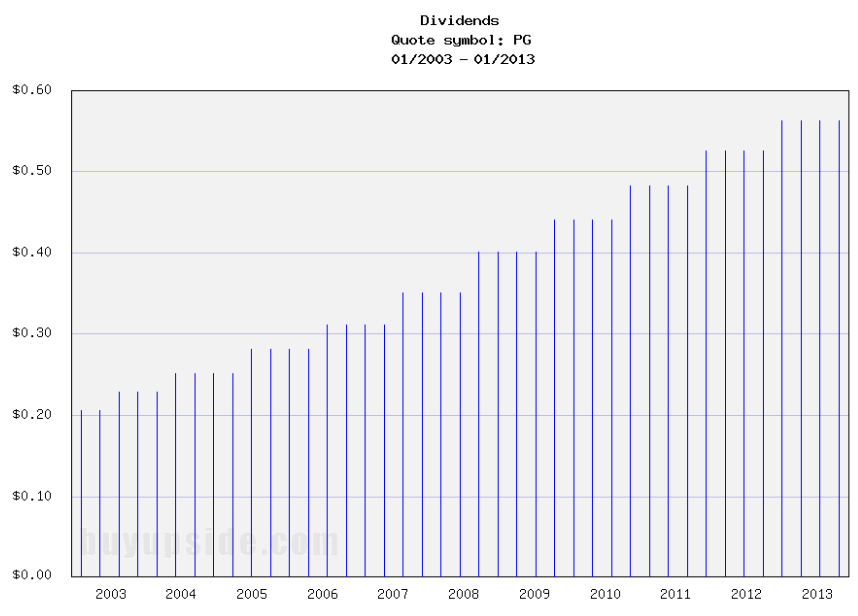

Coca-Cola (KO) has a market capitalization of $178.67 billion. The company employs 150,900 people, generates revenue of $48.017 billion and has a net income of $9.086 billion. The firm’s earnings before interest, taxes, depreciation and amortization (EBITDA) amounts to $12.761 billion. The EBITDA margin is 26.58 percent (the operating margin is 22.45 percent and the net profit margin 18.92 percent).
Financial Analysis: The total debt represents 37.84 percent of the company’s assets and the total debt in relation to the equity amounts to 99.45 percent. Due to the financial situation, a return on equity of 28.00 percent was realized. Twelve trailing months earnings per share reached a value of $1.97. Last fiscal year, the company paid $1.02 in the form of dividends to shareholders.
Market Valuation: Here are the price ratios of the company: The P/E ratio is 20.38, the P/S ratio is 3.72 and the P/B ratio is finally 5.46. The dividend yield amounts to 2.79 percent and the beta ratio has a value of 0.53. 

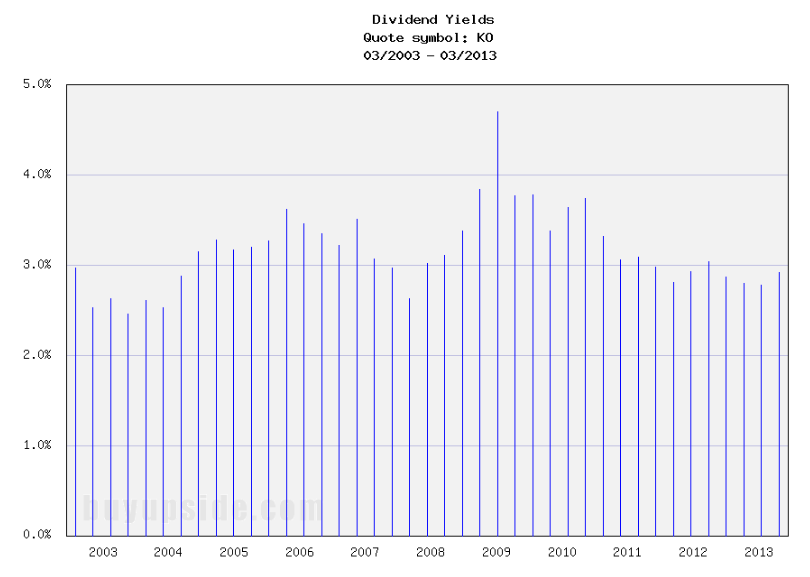
Take a closer look at the full list of the safest consumer dividend stocks. The average P/E ratio amounts to 20.42 and forward P/E ratio is 15.83. The dividend yield has a value of 3.40 percent. Price to book ratio is 6.73 and price to sales ratio 2.33. The operating margin amounts to 17.05 percent and the beta ratio is 0.61. Stocks from the list have an average debt to equity ratio of 4.01.
Here is the full table with some fundamentals (TTM):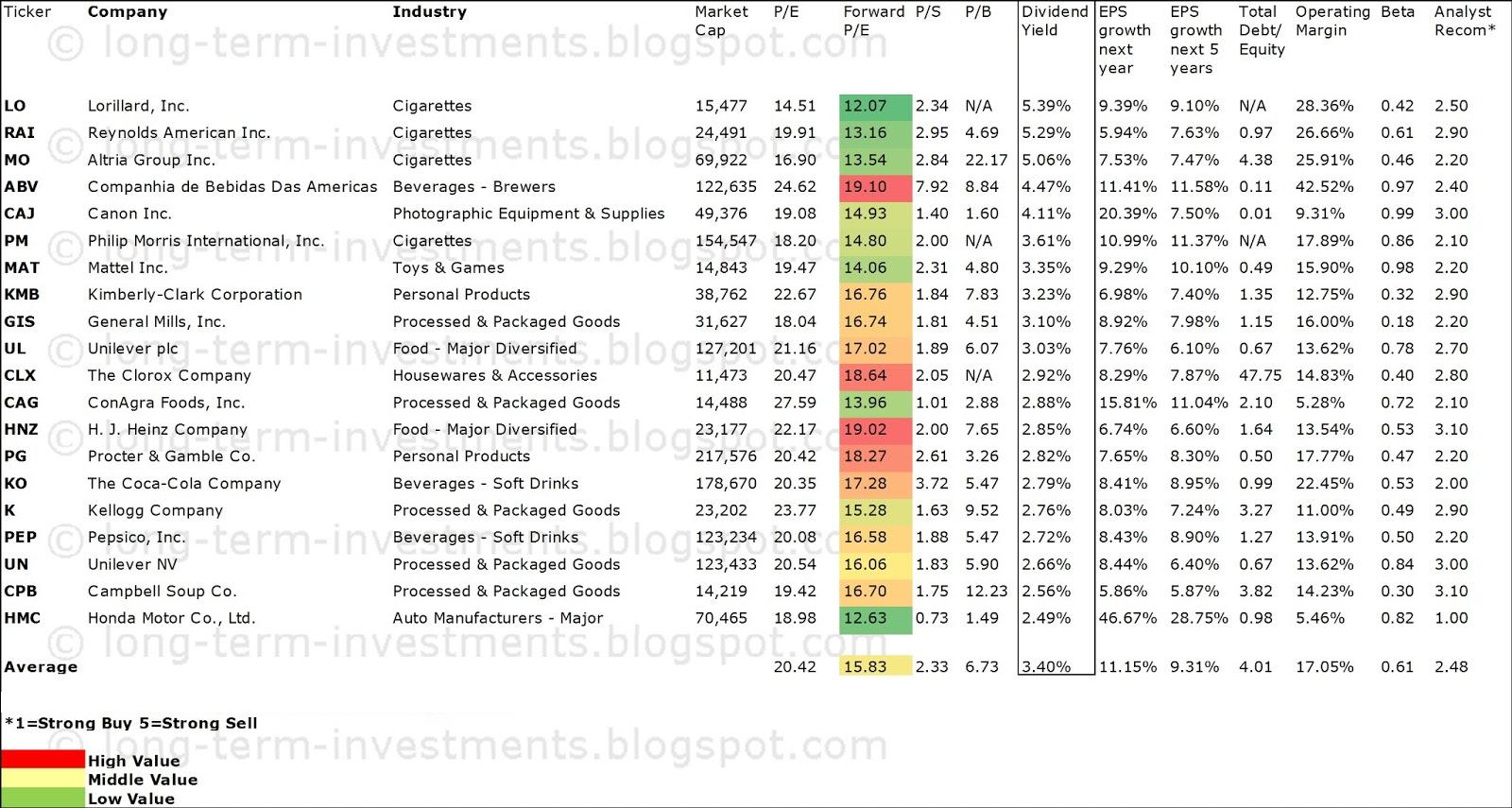
Related stock ticker symbols:
LO, RAI, MO, ABV, CAJ, PM, MAT, KMB, GIS, UL, CLX, CAG, HNZ, PG, KO, K, PEP,
UN, CPB, HMC
Disclosure: I am long LO, MO, ABV, PM, MAT, KMB, GIS, UL, HNZ, PG, KO, K, PEP, UN, CPB. I receive no compensation to write about these specific stocks, sector or theme. I don't plan to increase or decrease positions or obligations within the next 72 hours.
For the other stocks: I have no positions in any stocks mentioned, and no plans to initiate any positions within the next 72 hours. I receive no compensation to write about any specific stock, sector or theme.
- English (UK)
- English (India)
- English (Canada)
- English (Australia)
- English (South Africa)
- English (Philippines)
- English (Nigeria)
- Deutsch
- Español (España)
- Español (México)
- Français
- Italiano
- Nederlands
- Português (Portugal)
- Polski
- Português (Brasil)
- Русский
- Türkçe
- العربية
- Ελληνικά
- Svenska
- Suomi
- עברית
- 日本語
- 한국어
- 简体中文
- 繁體中文
- Bahasa Indonesia
- Bahasa Melayu
- ไทย
- Tiếng Việt
- हिंदी
20 Safest Consumer Goods Stocks
Published 04/16/2013, 07:49 AM
Updated 07/09/2023, 06:31 AM
20 Safest Consumer Goods Stocks
Latest comments
Loading next article…
Install Our App
Risk Disclosure: Trading in financial instruments and/or cryptocurrencies involves high risks including the risk of losing some, or all, of your investment amount, and may not be suitable for all investors. Prices of cryptocurrencies are extremely volatile and may be affected by external factors such as financial, regulatory or political events. Trading on margin increases the financial risks.
Before deciding to trade in financial instrument or cryptocurrencies you should be fully informed of the risks and costs associated with trading the financial markets, carefully consider your investment objectives, level of experience, and risk appetite, and seek professional advice where needed.
Fusion Media would like to remind you that the data contained in this website is not necessarily real-time nor accurate. The data and prices on the website are not necessarily provided by any market or exchange, but may be provided by market makers, and so prices may not be accurate and may differ from the actual price at any given market, meaning prices are indicative and not appropriate for trading purposes. Fusion Media and any provider of the data contained in this website will not accept liability for any loss or damage as a result of your trading, or your reliance on the information contained within this website.
It is prohibited to use, store, reproduce, display, modify, transmit or distribute the data contained in this website without the explicit prior written permission of Fusion Media and/or the data provider. All intellectual property rights are reserved by the providers and/or the exchange providing the data contained in this website.
Fusion Media may be compensated by the advertisers that appear on the website, based on your interaction with the advertisements or advertisers.
Before deciding to trade in financial instrument or cryptocurrencies you should be fully informed of the risks and costs associated with trading the financial markets, carefully consider your investment objectives, level of experience, and risk appetite, and seek professional advice where needed.
Fusion Media would like to remind you that the data contained in this website is not necessarily real-time nor accurate. The data and prices on the website are not necessarily provided by any market or exchange, but may be provided by market makers, and so prices may not be accurate and may differ from the actual price at any given market, meaning prices are indicative and not appropriate for trading purposes. Fusion Media and any provider of the data contained in this website will not accept liability for any loss or damage as a result of your trading, or your reliance on the information contained within this website.
It is prohibited to use, store, reproduce, display, modify, transmit or distribute the data contained in this website without the explicit prior written permission of Fusion Media and/or the data provider. All intellectual property rights are reserved by the providers and/or the exchange providing the data contained in this website.
Fusion Media may be compensated by the advertisers that appear on the website, based on your interaction with the advertisements or advertisers.
© 2007-2024 - Fusion Media Limited. All Rights Reserved.
